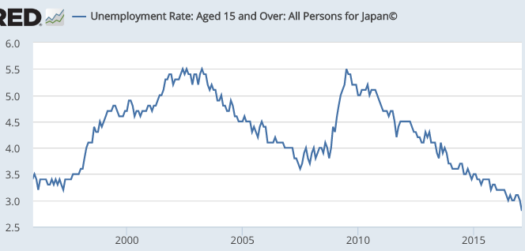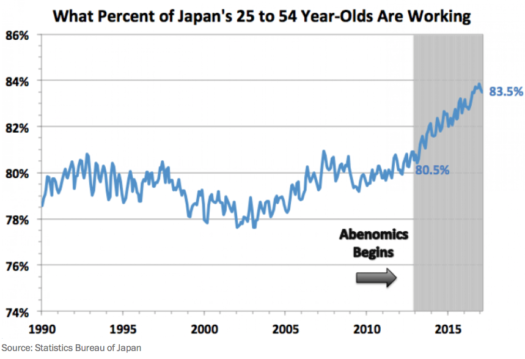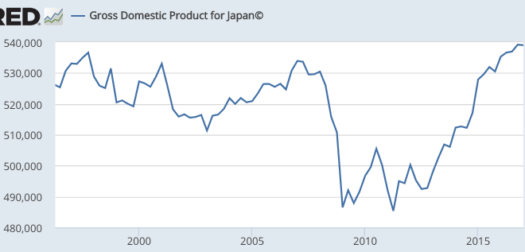Love him or hate him, there’s no denying that Krugman is a brilliant economist. David Beckworth’s interview with Krugman is probably my favorite so far in the series, even though on the policy issues I tend to agree more with earlier interviewees such as Bullard. (Interestingly, these two agreed on a number of issues, despite being far apart on the political spectrum.)
There’s no transcript, so I’ll rely on memory, and then leave a few observations after each point:
1. When discussing his famous 1998 paper, Krugman said the hard part was determining the implication of an “expectations trap” for policymakers.
This is a very good point, and most people underestimate this problem. Krugman himself has changed his views as to the paper’s implication, in the years since it was published.
2. He indicated that when trying to exit a liquidity trap, you don’t need to just convince the central bankers, you also need to convince the public.
I have a “build it and they will come” attitude here. If the central bank adopts an effective policy response, I think the public will believe it. The real problem has been the failure of central banks to be willing to adopt “do whatever it takes” policies.
3. He suggested that price level targeting might not be enough—you might need a higher inflation target if the equilibrium real interest rate fell to very low levels, and stayed there.
Here my view is different. A liquidity trap should not be viewed as zero nominal interest rates, but rather the zero bound on eligible assets that the central bank has not yet purchased. Imagine a policy of targeting the price level with CPI futures. That policy will work regardless of how low the equilibrium interest rate falls, as low as the central bank has the ability to adjust its balance sheet to base money demand. Ditto for exchange rate targeting (i.e. Singapore). Liquidity traps are not times when fiscal policy is needed, they are times when bigger central bank balance sheets are needed.
Krugman cites Japan’s falling population. On the one hand that might reduce Japan’s equilibrium real interest rate. But it also reduces aggregate supply, which is inflationary.
4. Krugman noted that elite policymakers don’t think that an inflation target of higher than 2% is responsible.
My immediate reaction was “Hmmm, where did they get that idea.” To his credit, Krugman later joked “I may have set back policy by decades with that credibly promise to be irresponsible remark.”
5. The first QE in the US and Europe helped to restore confidence to economies that had been destabilized by private sector financial turmoil.
My reaction is that that financial turmoil was at least partly caused by bad monetary policy, which was causing NGDP growth expectations to plummet.
6. Krugman points out that Congress would have objected to a higher inflation target.
I think that’s right, but other options like PL targeting and NGDP targeting we at least possibilities. More importantly, the Fed could have kept the inflation target at 2% and done far more in the realm of “concrete steppes”.
7. Krugman’s ideal policy back in 2009 would have been enough fiscal stimulus to get inflation up to 4%, followed by standard monetary policy to stabilize the economy after that (presumably something like policy during the Great Moderation, except with a high enough inflation target to prevent hitting the zero bound.)
That might work, but if you raised the inflation target to 4%, then I doubt you’d even need fiscal stimulus.
8. On whether 2% was a target or a ceiling, Krugman actually seemed less cynical than David (which might surprise people given their personalities).
I tend to agree with Krugman on this point, but I also believe that David has the better argument, and this is one place where Krugman struggled a bit to refute it. He talked about central bankers wanting to go back to the old days of Volcker, when they fought a heroic battle against inflation, and he also talked about the Fed as an institution having a bias toward fighting inflation. Of course you could view those observations as supporting David’s claim about 2% being a ceiling, and I sensed that Krugman saw that as well.
9. Krugman suggested that he had mixed feelings about NGDP targeting, worrying that it might allow too much inflation volatility.
Here again, he struggled a bit in his reply. At one point he tried to suggest a scary counterfactual of 1% RGDP growth and 4% inflation, and then immediately seemed to realize that a few minutes earlier he had advocated 4% inflation. In my view Krugman missed the point here. A period of 1% RGDP trend growth is precisely when you are likely to see the sort of low equilibrium real interest rate that Krugman himself thinks calls for 4% inflation target. Admittedly I am relying a bit on a sort of “divine coincidence” of RGDP trend growth and equilibrium real interest rates moving together, but I also think there are strong labor market reasons to prefer NGDP targeting. Krugman said something about menu costs of inflation, but surely he cares more about unemployment than menu costs, and labor market stability is almost certainly more closely correlated with NGDP than inflation. Indeed an awareness of that fact (in my view) largely explains why central banks have “flexible” inflation targets.
Like most other mainstream economists, Krugman doesn’t seem aware of all the arguments for NGDP targeting made by market monetarists, and even earlier by George Selgin. We still have work to do.
Overall a great interview. Krugman said, “I don’t really know” more often than one might expect from reading his NYT columns, which is to his credit.
I used to think his bashing of the GOP was exaggerated, but now it seems on target. I say he’s finally got it right, whereas Krugman would presumably say that Trump proves that he was right all along.





